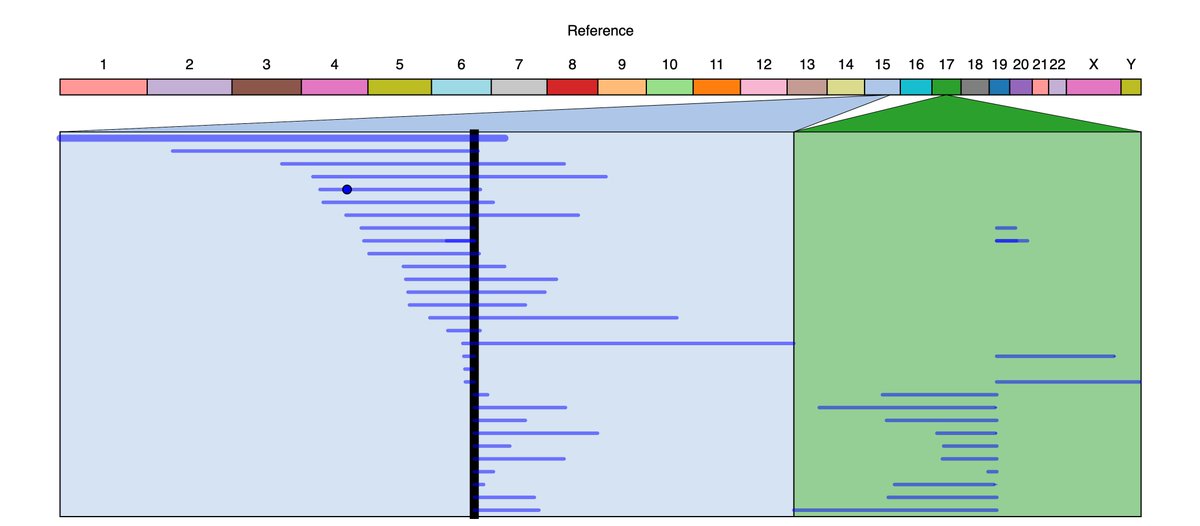We've put out a short preprint today showing some updates in Readfish for @nanopore adaptive sampling. biorxiv.org/content/10.110… @alexomics is giving a talk shortly at the #nanoporeconf about this - but a short thread here.
Readfish now exploits the barcoding features ready baked in to @nanopore guppy to allow a few new features. You can switch off barcodes as you wish but more interestingly, you can assign different targets to different barcoded samples. 

This is interesting in lots of places, but we show the use of three different human gene panels on three different samples on a single GridION flow cell. 





This allows the identification of structural variants that occur between genes within the panels of interest - but it can also allow you to look at copy number variation which matches other approaches such as Bionano. 



Of course - you can watch all this in real-time using our minoTour tool developed by @Rorymatics - though this is a branch currently under active development. academic.oup.com/bioinformatics…
For the real old hands who remember read until 2016 style... this allowed us to revisit an old challenge about balancing coverage over viral genomes and target individual amplicons (not in this preprint).
Can you track coverage over dozens of barcodes in real time? Well thanks to @DrT1973 and a new tool coming soon called SwordFish - we know we can! Now this does act more as a filter than enrichment but... 



we do find that we can recover samples faster and recover more complete genomes by using adaptive sampling tracking 96 barcodes simultaneously. These data will be added to biorxiv.org/content/10.110… fairly soon. 

As ever a lot of work by @alexomics and @Rorymatics who have both been through the @nottm_bbsrc_dtp program as iCASE students - and we happen to have an opening for another if you are interested! nottingham.ac.uk/bbdtp/case-202…
• • •
Missing some Tweet in this thread? You can try to
force a refresh








